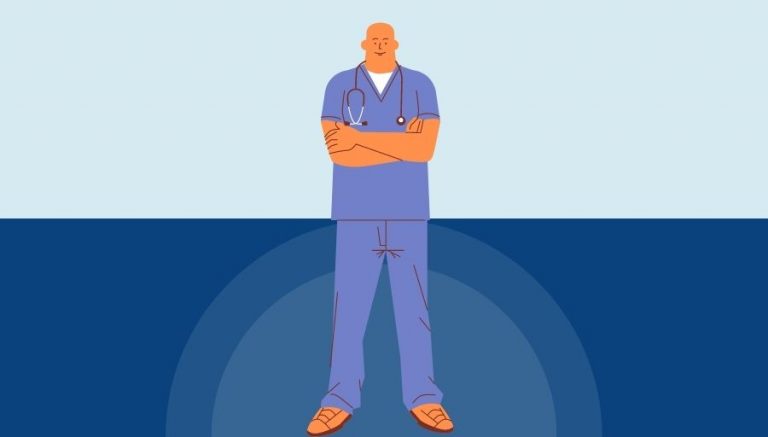How To Use CPT Code 22110
CPT code 22110 describes the partial excision of a vertebral body in the cervical spine for an intrinsic bony lesion, without decompression of the spinal cord or nerve root(s), involving a single vertebral segment. This article will provide a comprehensive overview of CPT code 22110, including its description, official definition, procedure, qualifying circumstances, appropriate usage, documentation requirements, billing guidelines, historical information, and examples.
1. What is CPT Code 22110?
CPT code 22110 is used to describe a surgical procedure that involves the partial excision of a vertebral body in the cervical spine. This procedure is performed to remove a damaged or diseased area contained within a single bone, without decompressing the spinal cord or nerve root(s). It specifically applies to cases where only one vertebral segment is involved.
2. Official Description
The official description of CPT code 22110 is as follows: ‘Partial excision of vertebral body, for intrinsic bony lesion, without decompression of spinal cord or nerve root(s), single vertebral segment cervical.’
3. Procedure
- Before the procedure, the patient is appropriately prepped and anesthetized.
- The provider makes an incision in the neck over the target vertebra.
- He dissects down to the surface of the bone and strips the muscles from the vertebral body.
- The damaged or diseased portion of the vertebral body is then excised.
- The wound is irrigated, and the incision is closed in layers.
4. Qualifying circumstances
CPT code 22110 is applicable when there is an intrinsic bony lesion within a single vertebral body in the cervical spine. This code specifically excludes cases involving decompression of the spinal cord or nerve root(s). It is important to note that this procedure is limited to a single vertebral segment.
5. When to use CPT code 22110
CPT code 22110 should be used when a provider performs a partial excision of a vertebral body in the cervical spine for an intrinsic bony lesion, without decompression of the spinal cord or nerve root(s), involving a single vertebral segment. It is crucial to ensure that the procedure meets all the specific criteria outlined in the code description.
6. Documentation requirements
Documentation for CPT code 22110 should include the following:
- Patient’s diagnosis indicating the presence of an intrinsic bony lesion
- Description of the specific vertebral body and segment involved
- Details of the procedure performed, including the extent of the excision
- Confirmation that decompression of the spinal cord or nerve root(s) was not performed
- Operative notes describing the surgical technique and any additional findings
- Any complications encountered during the procedure and their management
- Postoperative care instructions and follow-up plans
7. Billing guidelines
When billing for CPT code 22110, it is important to adhere to the following guidelines:
- Ensure that the procedure meets all the specific criteria outlined in the code description
- Do not report CPT code 22110 if decompression of the spinal cord or nerve root(s) was performed
- Review payer policies and guidelines to ensure accurate coding and billing
- Consider the use of appropriate modifiers, if applicable, to indicate any additional procedures or circumstances
8. Historical information
CPT code 22110 was initially added to the Current Procedural Terminology system on January 1, 1990. It has undergone several changes, including being added to the Inpatient Only (IPO) list in 2017 and subsequently removed from the list in 2021. However, it was added back to the IPO list in 2022.
9. Similar codes to CPT code 22110
While CPT code 22110 is unique in its description, there are other codes within the Excision Procedures on the Spine (Vertebral Column) range that may be applicable in different scenarios. Some similar codes include:
- CPT 22100: Excision of vertebral body, partial or complete, for biopsy, single vertebral segment
- CPT 22112: Excision of vertebral body, partial or complete, for biopsy, single vertebral segment; thoracic
- CPT 22114: Excision of vertebral body, partial or complete, for biopsy, single vertebral segment; lumbar
- CPT 22116: Excision of vertebral body, partial or complete, for biopsy, single vertebral segment; sacral
9. Examples
- A patient undergoes a partial excision of the vertebral body in the cervical spine (C4) to remove an intrinsic bony lesion without decompression of the spinal cord or nerve root(s).
- A provider performs a partial excision of the vertebral body in the cervical spine (C6) for an intrinsic bony lesion, limited to a single vertebral segment.
- During surgery, a damaged area within the vertebral body in the cervical spine (C2) is excised without decompressing the spinal cord or nerve root(s).
- A patient with an intrinsic bony lesion in the cervical spine (C7) undergoes a partial excision of the vertebral body, involving a single vertebral segment.
- A provider performs a partial excision of the vertebral body in the cervical spine (C3) to remove a diseased area contained within a single bone, without decompressing the spinal cord or nerve root(s).
- During surgery, a damaged portion of the vertebral body in the cervical spine (C5) is excised, limited to a single vertebral segment.
- A patient undergoes a partial excision of the vertebral body in the cervical spine (C1) for an intrinsic bony lesion, without decompression of the spinal cord or nerve root(s).
- A provider performs a partial excision of the vertebral body in the cervical spine (C8) to remove a damaged area contained within a single bone, involving a single vertebral segment.
- During surgery, a diseased portion of the vertebral body in the cervical spine (C9) is excised without decompressing the spinal cord or nerve root(s).
- A patient with an intrinsic bony lesion in the cervical spine (C2) undergoes a partial excision of the vertebral body, limited to a single vertebral segment.


